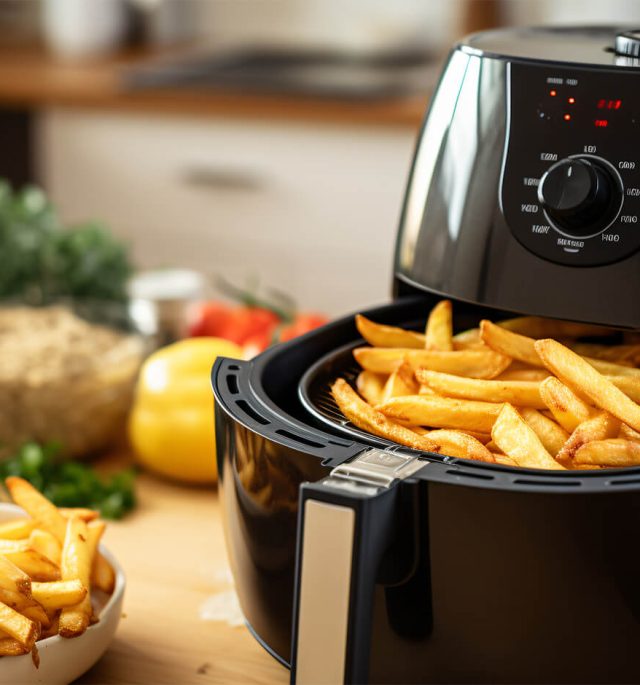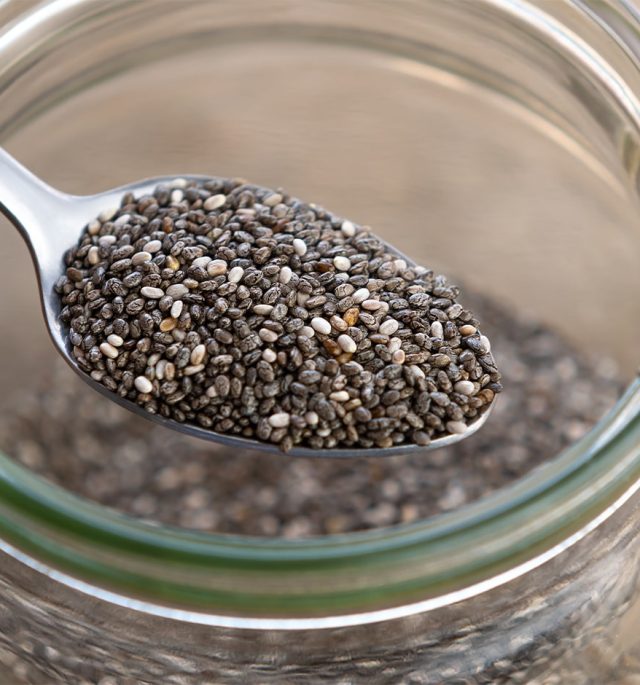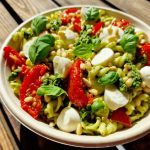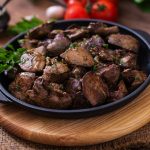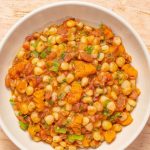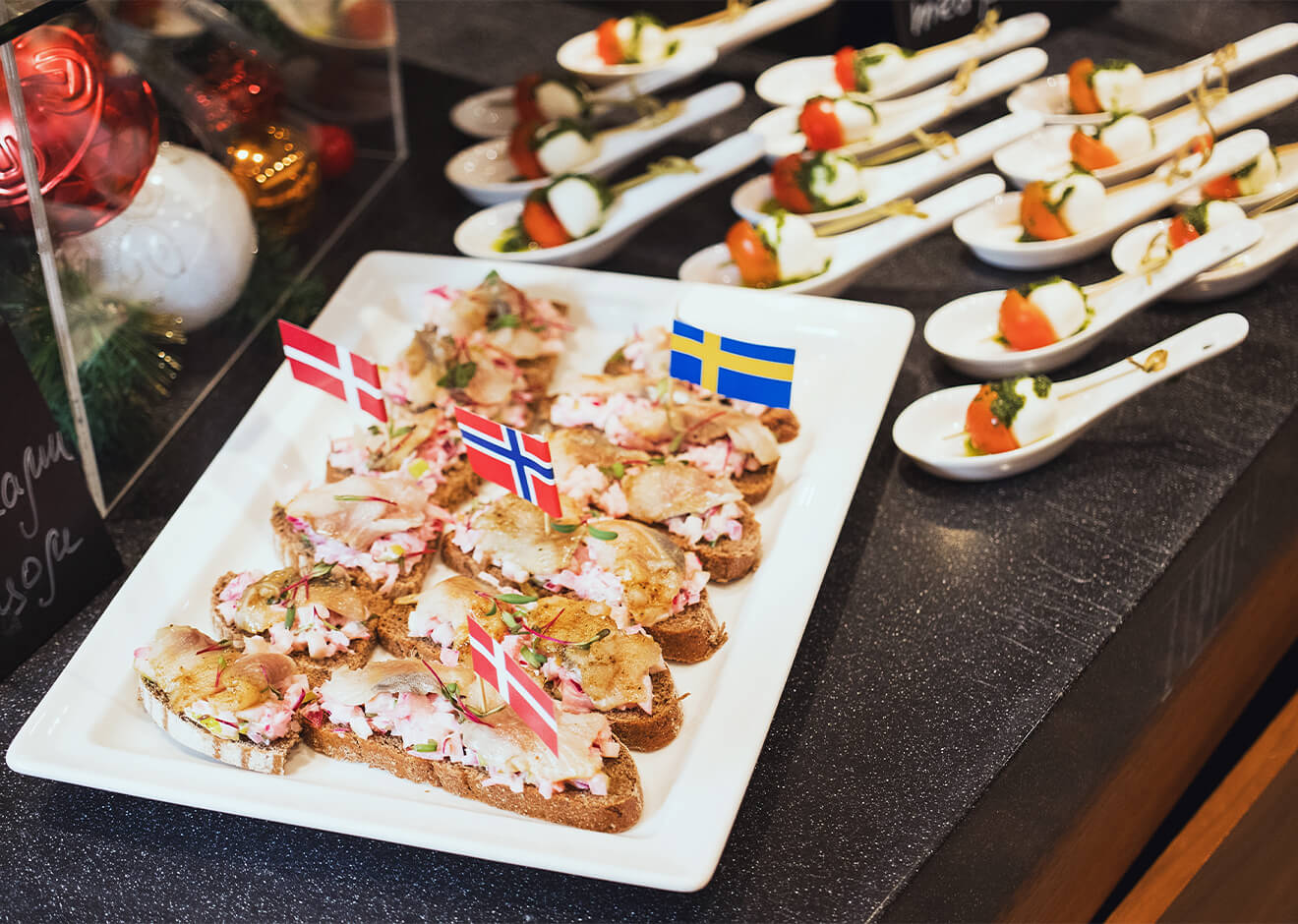
Table of Contents
Welcome to the ultimate to Scandinavian food guide! Scandinavia is known for its fresh and flavorful ingredients, as well as its emphasis on simple preparations highlighting the natural taste of each ingredient. In this comprehensive guide, we’ll take you on a culinary journey through the region’s traditional dishes, popular ingredients, cooking techniques, street food, and sweet treats.
Whether you’re an experienced chef or a food lover looking to explore new flavors, our guide will provide you with all the information you need to know about Scandinavian food culture and traditions. So, get ready to discover the unique and delicious flavors of Scandinavia with our Scandinavian food guide.
Introduction to Scandinavian Cuisine
Welcome to the Ultimate Scandinavian Food Guide! Before we dive into the mouth-watering dishes and unique flavors of the region, let’s take a closer look at the origins and characteristics of Scandinavian cuisine.
Scandinavian cuisine is rooted in the region’s harsh climate and geography, which has historically led to a focus on simple yet flavorful preparations using local, seasonal ingredients. This emphasis on freshness and quality is at the heart of Scandinavian cooking, which relies heavily on seafood, game, berries, and other ingredients harvested from the land and water.
Despite sharing certain features and ingredients, Scandinavian cuisine is also influenced by the distinctive culinary traditions of each country, from Swedish meatballs and Danish pastries to Norwegian salmon and Finnish reindeer stew. Another key aspect of Scandinavian cooking is its commitment to sustainability and ethical sourcing, which has been embraced by the influential New Nordic cuisine movement in recent years.
Traditional Scandinavian Dishes
Scandinavia is home to a rich and diverse culinary heritage, with each country boasting its own unique flavors and traditional dishes. Here are some of the most iconic and beloved dishes from the region:
Swedish Meatballs
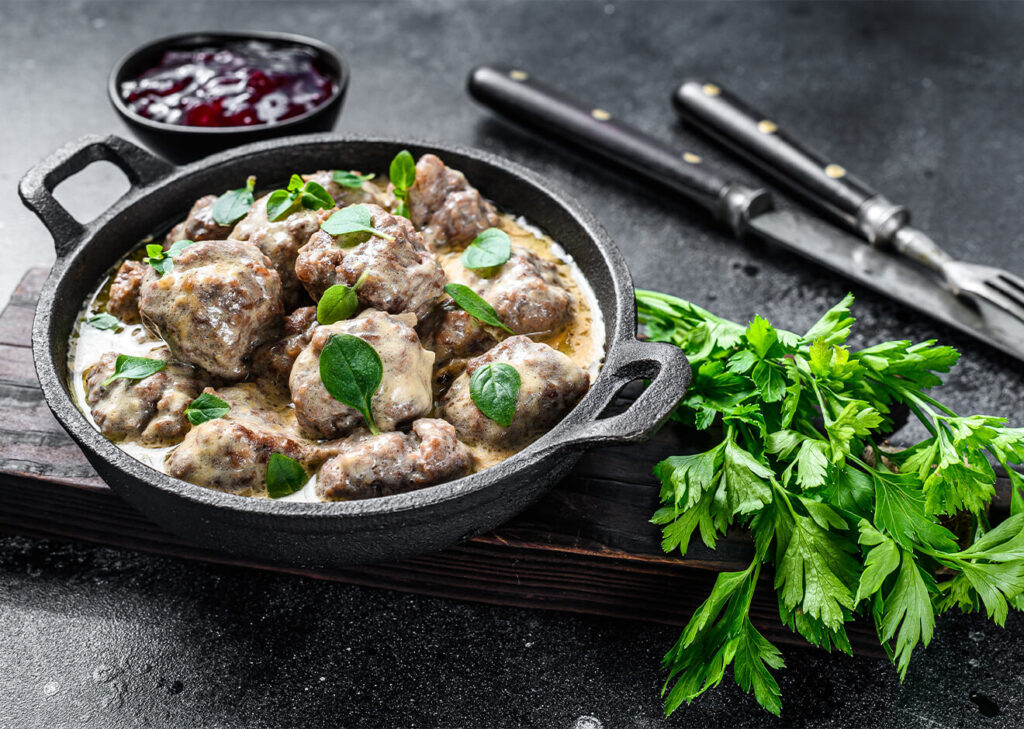
Probably the most famous Scandinavian dish, Swedish meatballs are traditionally made with a mixture of beef and pork, seasoned with spices like nutmeg and allspice, and served with a creamy gravy, lingonberry preserves, and mashed potatoes.
| Ingredients | Instructions |
|---|---|
| 1/2 lb. ground beef 1/2 lb. ground pork 1/4 cup breadcrumbs 1 egg 1/4 tsp. nutmeg 1/4 tsp. allspice 1/2 tsp. salt 1/4 tsp. black pepper 1/3 cup beef broth 1/3 cup heavy cream 1 tbsp. butter 1 tbsp. flour 1 tbsp. Dijon mustard Salt and pepper to taste | 1. In a mixing bowl, combine the ground beef, ground pork, breadcrumbs, egg, nutmeg, allspice, salt, and black pepper. Mix everything together until well combined. You can use your hands or a wooden spoon for this step. 2. Shape the mixture into small meatballs, about 1 inch in diameter. Place them on a plate or a baking sheet lined with parchment paper. 3. In a large skillet or frying pan, heat a little oil over medium-high heat. Add the meatballs in batches, making sure not to overcrowd the pan. Fry the meatballs until they are browned on all sides and cooked through. This should take about 4-5 minutes per batch. Once done, transfer the meatballs to a plate lined with paper towels to drain any excess oil. 4. In the same skillet used to fry the meatballs, reduce the heat to medium and add the butter. Let it melt, then stir in the flour. Cook the flour-butter mixture, stirring constantly, for about 1-2 minutes until it turns golden brown and develops a nutty aroma. 5. Slowly pour in the beef broth while continuously whisking to avoid lumps. Stir in the heavy cream and Dijon mustard. Bring the mixture to a simmer and let it cook for a few minutes until the sauce thickens. Season with salt and pepper to taste. 6. Once the sauce is ready, add the cooked meatballs back into the skillet. Gently stir to coat the meatballs with the sauce. Let them simmer in the sauce for a couple of minutes to heat through. 7. Serve the Swedish Meatballs hot, garnished with a sprinkle of fresh parsley if desired. These meatballs are delicious on their own or served with mashed potatoes, pasta, or any side dish of your choice. |
Norwegian Salmon
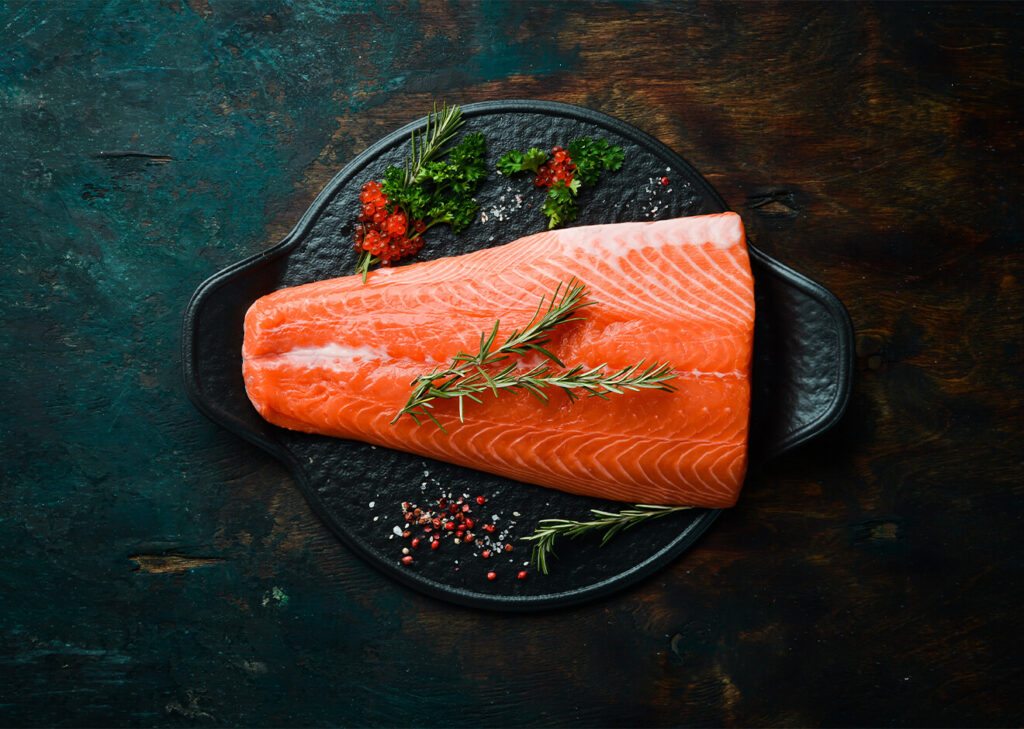
Norway is one of the largest exporters of salmon in the world, and the country’s love for this fish is reflected in many of its traditional dishes. Gravadlax, which is cured with salt, sugar, and dill, is a favorite appetizer, while pan-seared salmon fillets served with potatoes and creamy sauce is a classic main course.
Danish Open-Faced Sandwiches (Smørrebrød)
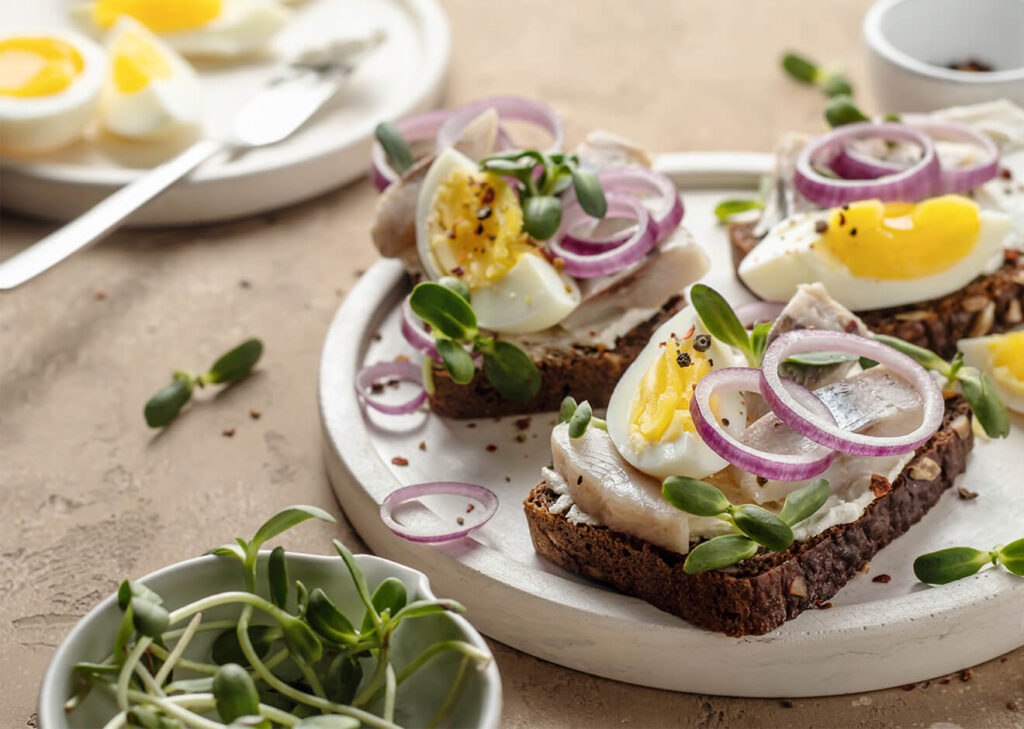
Known as smørrebrød in Danish, open-faced sandwiches are a staple of Danish cuisine. These are not your average sandwiches though — they are often adorned with a variety of toppings such as herring, meatballs, or roast beef, and served on rye bread with butter and fresh herbs.
Finnish Fish Stew
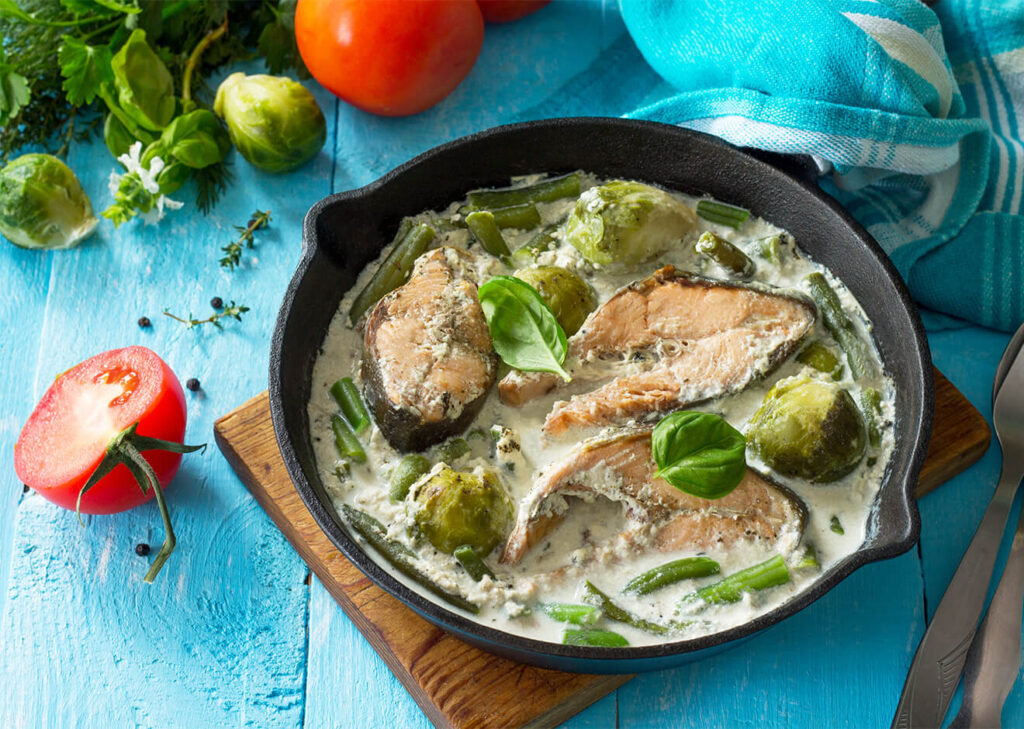
Finnish cuisine is heavily influenced by the country’s lakes and forests, and fish is a prominent ingredient. This hearty fish stew, also known as kalakeitto, is made with fresh white fish, potatoes, leeks, and cream, and often served with rye bread.
- Which Scandinavian dish is famous worldwide?
- What is gravadlax?
- What is a smørrebrød?
- What is kalakeitto?
“Swedish meatballs are a must-try when visiting Scandinavia. They’re incredibly flavorful and filling, and the tangy lingonberry sauce is the perfect accompaniment.”
Popular Scandinavian Ingredients

Scandinavian cuisine is known for its use of fresh, local ingredients that are abundant in the region. Here are some of the most popular ingredients used in Scandinavian cooking:
| Ingredient | Description |
|---|---|
| Fish | Scandinavia’s location on the coast means that fish, particularly salmon and herring, are widely used in traditional dishes. |
| Potatoes | Potatoes are a staple ingredient in Scandinavian cuisine and are used in a variety of dishes, including mashed, boiled, and baked potatoes. |
| Lingonberries | This tart, red berry is a popular ingredient in Scandinavian cooking and is often used in jams, sauces, and desserts. |
| Rye Bread | Rye bread is a staple food in Scandinavia and is often served with herring or other seafood dishes. |
| Dill | Scandinavians use dill to flavor many dishes including pickled herring, boiled potatoes, and sauces. |
Other common ingredients include game meats such as reindeer and elk, as well as dairy products like cheese and butter.
With these ingredients, Scandinavian cuisine is able to create unique flavors and textures that are beloved by many.
Scandinavian Culinary Techniques

In addition to its unique flavors and fresh ingredients, Scandinavian cuisine is also known for its specific culinary techniques. Here are some of the most popular:
Smoking
Smoked fish and meats are staples in Scandinavian cuisine, with smoking used to preserve and flavor the food. Popular smoked items include salmon, herring, and reindeer meat. The smoking process can be done hot or cold, with different types of wood used for different flavors.
Pickling
Pickling is another commonly used preservation method in Scandinavian cooking. Vegetables like cucumbers, beets, and onions are often pickled, as well as herring and salmon. The pickling liquid typically includes vinegar, sugar, and spices like mustard seeds and dill.
Curing
Curing is a method used to preserve fish and meat in Scandinavian cuisine, similar to smoking. One of the most popular cured items is gravlax, which is raw salmon cured in salt, sugar, and dill. Other popular cured meats include reindeer, elk, and wild boar.
Baking
Baking is also an important culinary technique in Scandinavian cuisine, with many traditional dishes featuring breads and pastries. Rye bread is a staple, and sweet pastries like cinnamon rolls and cardamom buns are popular for breakfast and fika, the Swedish tradition of taking a coffee break with a sweet treat.
By utilizing these unique culinary techniques, Scandinavian cuisine creates flavors and textures that are unlike any other.
Scandinavian Street Food
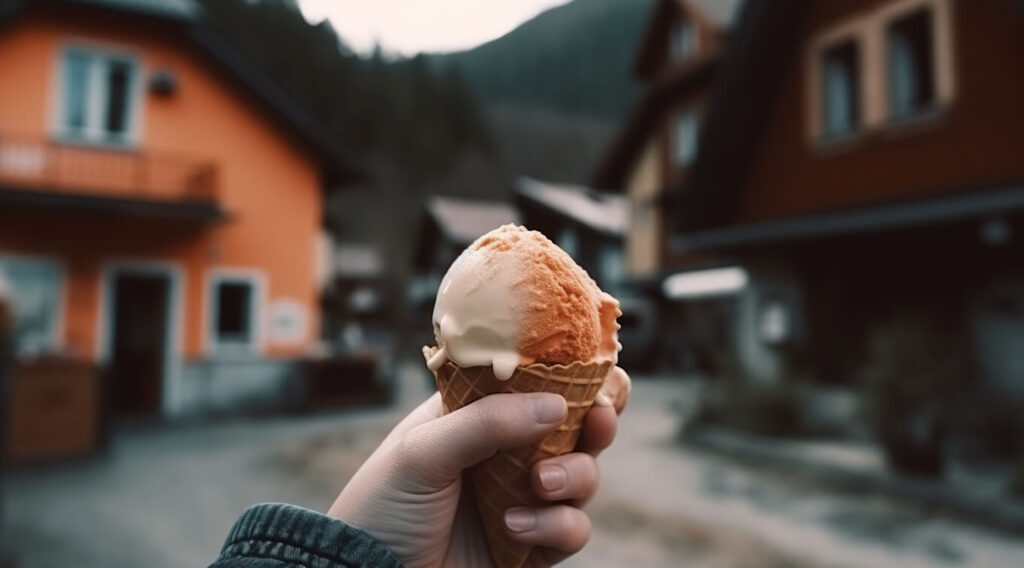
Get ready to take a delicious journey through the streets of Scandinavia. From savory treats to sweet indulgences, street food is an integral part of the region’s culinary culture. Here are some must-try dishes:
Norwegian Waffles
Don’t let the name fool you – these waffles are nothing like the breakfast treat you’re used to. Norwegian waffles are made with sour cream, creating a denser, more savory flavor. They’re often served with jam and brown cheese, a uniquely Norwegian delicacy made from goat’s milk.
Danish Hot Dogs
Hot dogs may seem like a common street food item, but the Danes take theirs to a whole new level. Served on a soft, pillowy bun and topped with crispy onions, remoulade sauce, and pickles, these hot dogs are a favorite among locals and visitors alike.
Swedish Cinnamon Buns
No trip to Sweden is complete without trying a traditional cinnamon bun, or “kanelbullar.” These sweet, doughy pastries are spiced with cinnamon and cardamom and topped with a generous amount of sugar. They’re perfect for a mid-day snack or a sweet treat after dinner.
Next time you’re exploring Scandinavia, be sure to stop by a street vendor and try one of these tasty dishes. Your taste buds will thank you!
New Nordic Cuisine

While traditional Scandinavian cuisine is known for its simplicity and emphasis on local ingredients, a more modern culinary movement has emerged in recent years: New Nordic cuisine. This innovative and sustainable approach to cooking has gained international recognition and helped put Scandinavian cuisine on the global map.
Developed by a group of Danish chefs in the early 2000s, the New Nordic movement focuses on using only locally sourced ingredients and traditional Nordic cooking techniques. The goal is to create cuisine that is both delicious and environmentally friendly, with a strong emphasis on seasonality and freshness.
Key Features of New Nordic Cuisine
The main characteristics of New Nordic cuisine include:
- Local ingredients: All ingredients used in New Nordic cooking must be sourced from the Nordic region, including Denmark, Finland, Iceland, Norway, and Sweden.
- Seasonality: Ingredients are used only when they are in season, making for fresher and more flavorful dishes.
- Sustainability: The focus on local ingredients also means a reduced carbon footprint, and New Nordic chefs are committed to environmentally friendly practices.
- Traditional techniques: Cooking methods such as smoking, curing, and pickling are used to create unique flavors and preserve ingredients.
One of the most famous New Nordic restaurants is Noma in Copenhagen, which has been named the world’s best restaurant multiple times. The menu changes frequently based on what ingredients are in season, but diners can expect dishes that are visually stunning and bursting with flavor.
“New Nordic cuisine is more than just a way of cooking – it’s a way of life that celebrates the beauty and bounty of the Nordic region. By using only local ingredients and traditional techniques, we hope to inspire a new generation of chefs and diners who care about sustainability and delicious food.” – René Redzepi, chef and co-founder of Noma.
Traditional Scandinavian Beverages

Scandinavian beverages have a rich and diverse history, with traditional drinks playing an important role in social gatherings and cultural events. Here are some of the most popular traditional beverages enjoyed in Scandinavia:
| Beverage | Country of Origin | Description |
|---|---|---|
| Aquavit | Norway, Sweden, Denmark | A strong spirit made from distilled potatoes or grain, flavored with spices like caraway, fennel, and dill. Often served as a digestif, and a popular accompaniment to pickled herring. |
| Glögg | Sweden, Finland, Norway | A mulled wine served warm during the winter months. Made with red wine, spices such as cinnamon, cloves, and ginger, and sweetened with sugar or honey. Best enjoyed with almonds and raisins. |
| Scandinavian Craft Beers | Sweden, Norway, Denmark | Scandinavian breweries are known for their innovative craft beers, often made with local ingredients such as lingonberries and sea buckthorn. Some popular breweries include Nøgne Ø in Norway and Mikkeller in Denmark. |
In addition to these traditional drinks, Scandinavia is also known for its coffee culture, with fika (coffee break) being a daily ritual in many Scandinavian countries. Tea is also a popular beverage, often enjoyed with a sweet pastry like a cinnamon roll or cardamom bun.
Scandinavian Desserts and Pastries
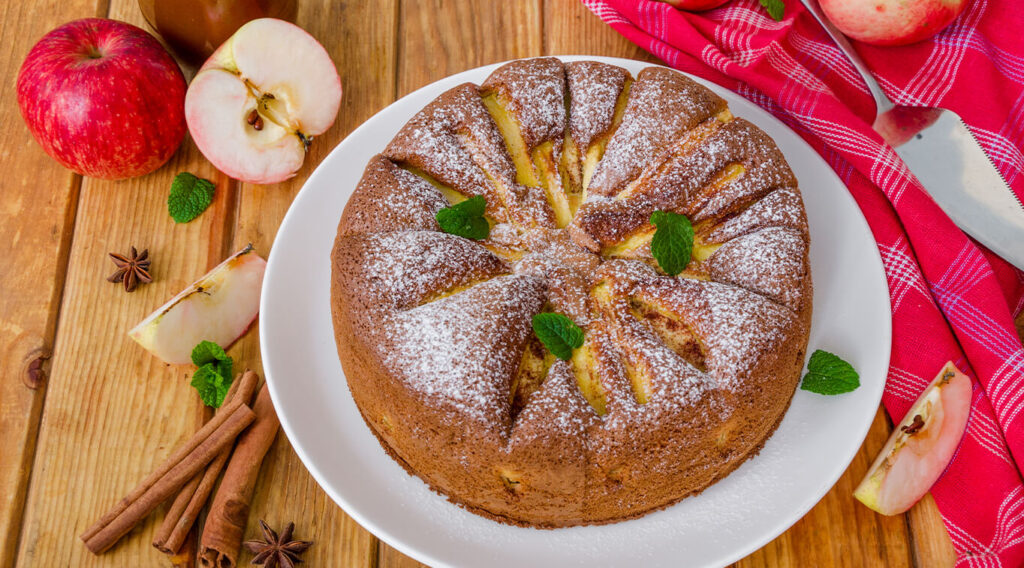
Scandinavian cuisine is known for its delicious and unique desserts and pastries, which range from sweet and buttery cakes to delicate pastries filled with cream and fruit. Here are some of the most popular Scandinavian desserts and pastries:
Norwegian Apple Cake
This simple yet delicious cake is a favorite in Norway, featuring layers of sliced apples over a moist sponge cake. It is typically served warm with a dollop of whipped cream or vanilla ice cream.
Swedish Princess Cake
This elegant cake is a staple in Sweden, featuring layers of sponge cake, vanilla custard, raspberry jam, and whipped cream, all topped with a layer of green marzipan. It is a popular choice for birthdays and special occasions.
Danish Pastries
Danish pastries, or “wienerbrød” in Danish, are a staple in Scandinavian bakeries and cafes. These flaky, buttery pastries can be filled with a variety of sweet or savory fillings, such as apricot, raspberry, cream cheese, and almond paste. They are typically served for breakfast or as a midday snack.
Kanelbullar
Kanelbullar, or Swedish cinnamon buns, are a beloved treat in Sweden. These soft and fluffy buns are filled with cinnamon sugar and butter, and are often topped with pearl sugar. They are perfect with a cup of coffee or tea.
Rosettes
Rosettes, or “rosettbakkels” in Norwegian, are delicate cookies that are deep-fried and dusted with powdered sugar. They are traditionally made during the holiday season and are a favorite in Norway and Sweden.
Whether you have a sweet tooth or just love trying new pastries, Scandinavian desserts are sure to satisfy. Don’t forget to try these delicious treats on your next visit to Scandinavia!
Healthy Scandinavian Eating

One of the key characteristics of Scandinavian cuisine is its focus on fresh, locally sourced ingredients and simple preparations. This emphasis on natural, wholesome foods makes Scandinavian cuisine a great choice for those looking to eat healthy.
Seafood is a staple of the Scandinavian diet and is a great source of lean protein. Scandinavian dishes often feature fatty fish like salmon or herring, which are high in heart-healthy omega-3 fatty acids. Whole grains are also a common feature of Scandinavian cuisine, with rye bread being a popular ingredient.
Another aspect of healthy Scandinavian eating is the use of fresh vegetables. Root vegetables like carrots, potatoes, and beets are commonly used, as are leafy greens like kale and spinach. Berries, particularly lingonberries, are also a popular ingredient in Scandinavian cuisine and are known for their high antioxidant content.
Finally, the Scandinavian diet emphasizes the importance of balance. Sweets and desserts are enjoyed in moderation, with many traditional Scandinavian desserts featuring fruit as the main ingredient. For a healthier twist on a classic Scandinavian dessert, try replacing refined sugar with natural sweeteners like honey or maple syrup.
Quick Tips for Eating Healthy Like a Scandinavian
- Eat plenty of seafood, particularly fatty fish like salmon or herring.
- Incorporate whole grains into your diet, such as in rye bread or porridge.
- Include a variety of fresh vegetables in your meals, such as root vegetables and leafy greens.
- Enjoy sweets and desserts in moderation, opting for fruit-based or naturally sweetened options whenever possible.
Scandinavian Food Culture and Traditions

Food is an integral part of Scandinavian culture and traditions, playing a central role in social and familial gatherings. The region’s cuisine is deeply rooted in its history and reflects the unique geography and climate.
Foraging
Foraging is a common practice in Scandinavian food culture, where people gather wild berries, mushrooms, and herbs from the forests and fields. This tradition dates back to ancient times, and foraging remains a popular pastime and a source of fresh, local ingredients.
Holiday Traditions
Holiday traditions revolve around food in Scandinavia, with each country having its own unique festivities and dishes. For example, Norwegians celebrate Christmas Eve with a feast of roasted lamb, pork belly, and lutefisk, while Swedes enjoy a smorgasbord of herring, meatballs, and potatoes for their midsummer celebration.
The Concept of “Hygge”
The Danish concept of “hygge” is a central part of Scandinavian food culture, emphasizing comfort, coziness, and togetherness. Hygge is often associated with warm drinks, such as glögg, and hearty stews and soups.
“Scandinavian food culture is all about experiencing the beauty of nature and enjoying the simple pleasures of life together with loved ones.”
Slow Food Movement
The Slow Food Movement, which originated in Italy, has gained popularity in Scandinavia in recent years. This movement emphasizes the importance of local, sustainable, and traditional foods, and encourages people to take time to savor their meals and appreciate the cultural and environmental significance of food.
Coffee Culture
Coffee is a beloved aspect of Scandinavian food culture, with each country having its own unique coffee traditions. In Sweden, “fika” is a daily ritual of taking a break with coffee and pastries, while in Norway, “kaffedrikk” is a social activity that often takes place during family gatherings.
Frequently Asked Questions about Scandinavian Food
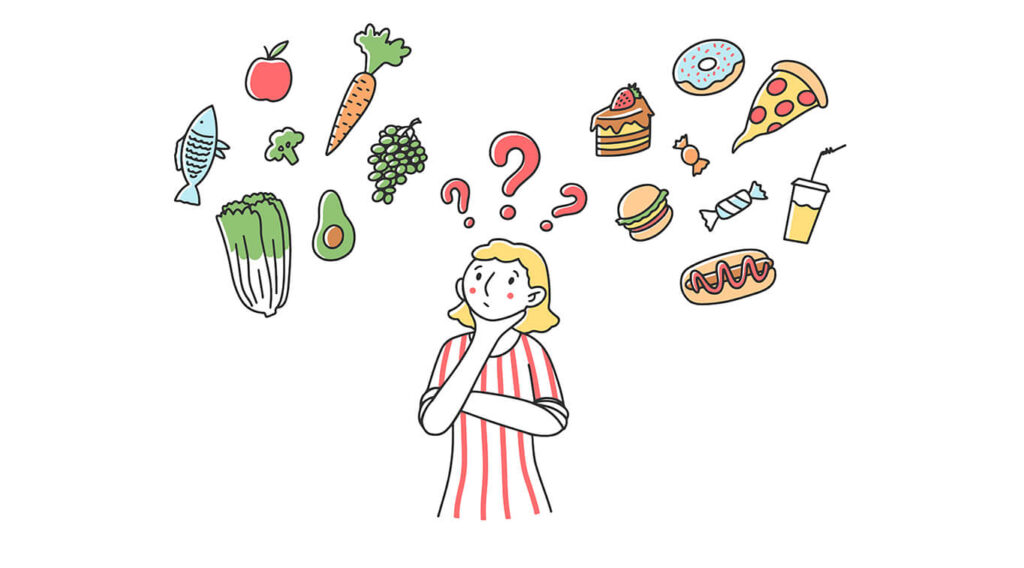
As you explore the world of Scandinavian cuisine, you may have some questions about what to expect, where to find authentic dishes, and how to accommodate dietary restrictions. Here are some frequently asked questions about Scandinavian food:
1. Are there any vegetarian options in Scandinavian cuisine?
Yes, there are plenty of vegetarian options in Scandinavian cuisine. Look for dishes like Swedish potato dumplings, Finnish beetroot soup, and Norwegian vegetable stew. Also, many restaurants in Scandinavia will offer vegetarian menus or options upon request.
2. Where can I find authentic Scandinavian food?
If you’re looking to taste authentic Scandinavian cuisine, try visiting a Scandinavian restaurant or look for a Scandinavian food festival in your area. You can also find many traditional Scandinavian ingredients and products in specialty food stores or online.
3. Can Scandinavian food accommodate dietary restrictions?
Yes, Scandinavian cuisine can accommodate various dietary restrictions. Many traditional dishes feature fish, potatoes, and vegetables, making them suitable for those who follow a gluten-free, dairy-free, or paleo diet. Additionally, many Scandinavian restaurants will offer vegetarian, vegan, and gluten-free options upon request.
4. What is the typical cost of a meal at a Scandinavian restaurant?
The cost of a meal at a Scandinavian restaurant can vary depending on the location and the type of restaurant. On average, expect to pay around $25-$40 per person for a meal at a mid-range Scandinavian restaurant.
5. Can I experience Scandinavian cuisine without traveling to Scandinavia?
Yes, you can experience Scandinavian cuisine without traveling to Scandinavia. Look for Scandinavian-inspired restaurants in your area, or try cooking traditional dishes at home using authentic ingredients. You can also attend Scandinavian food festivals and cultural events in your local community.
- March 8, 2024
- 4 Min Read
Are air-fryers healthy? Get the facts on the health benefits and potential drawbacks of air-fryers in this comprehensive blog post.
- March 4, 2024
- 8 Min Read
Discover the potential of chia seeds for weight loss with our professional advice, suggestions, and recipes.
